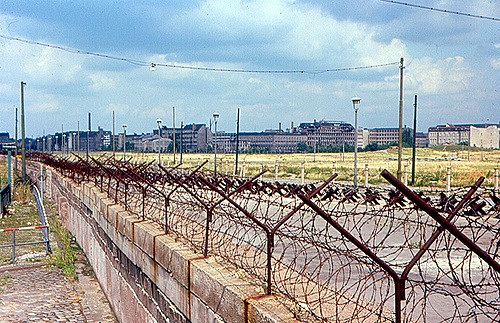
If you’re a store owner you may have heard about the Border Adjustment Tax, or BAT. On the surface, it sounds potentially appealing.
It promises to simplify the tax code and bring down U.S. corporate tax rates (one of the highest in the world) to a more reasonable 20%. It would impose a 20% tax on all imported products (and raw goods) and drop the tax rate on profits from exports to 0%.
Simplifying the tax code and encouraging domestic manufacturing – sounds great, right?
No. It’s a terrible idea.
Worse, possibly, than a politician body slamming a reporter the night before the election.
(OK, maybe not that terrible – but still pretty bad).
Here’s why:
It’s a Massive Tax on Consumers
If passed, the BAT would end up as an enormous tax on consumers.
The majority of what Americans purchase are made overseas. If a 20% tax was levied against all imports businesses would pass the majority of that extra cost on in terms of higher prices.
Prices on just about everything you’d buy at Target or Wal-Mart would go up 20%.
Overnight.
It Ignores the Benefits of Free Trade
The great majority of economists agree: free trade is good.
It’s not perfect and there are certainly winners and losers, but the professionals who study this stuff say the pros far outweighing the cons.
By passing the BAT, we’d be giving up:
The Benefits of Competitive Advantage
I live in Montana where it’s freezing cold nine months of the year. An orange tree would barely have time to laugh at me before dying under 36 inches of snow.
So we get our oranges from Florida. I’m guessing a few Floridians enjoy steak raised on the ranches of some of my fellow Montanans. Or travel to and enjoy the gorgeous mountains of Glacier National Park given their relatively flat terrain.
Our states both have unique strengths and providing equal access makes everyone better off.
And the BAT completely ignores that basic principle. The United States shouldn’t focus on weaving basic fabrics, making Brie cheese or trying to best the Cubans at cigars. Those are things other countries can do better than we can.
Increased Security
You’ve likely heard the famous quote: “When goods don’t cross borders, armies will”.
It’s why the Marshall Plan – the U.S.’ effort after World World II to help rebuild Europe – placed an emphasis on removing trade barriers. It was seen as a crucial element of building a peaceful post-war continent.
We’re likely not going to go to war with China over a 20% import tax. But it is a slippery slope and eat away at……
Protection from Trade Retaliation
If we slap a 20% tax on all imported goods, there’s a very good chance (or at least, an emotional incentive) for other countries to do the same to us.
This could actually hurt the exporters that the BAT is trying to help by making their good more expensive abroad.
It Will Hurt Most Businesses
Businesses will feel the pinch of the BAT alongside consumers faced with higher prices.
Consumers will purchase fewer products due to the newly raised prices. Especially in highly competitive markets, it’s likely that businesses won’t be able to raise their prices by the full price of the import tax which will hurt profit margins.
I’ve talked to multiple store owners who are terrified of this passing. They fear it could easily put them out of business.
Ultimately, the BAT Addresses the Wrong Problem
Ultimately, the BAT is trying to solve an unsolvable problem: bringing manufacturing back to the U.S.
People are often surprised to learn that as a country we’re manufacturing twice as much stuff here at home as we did a decade ago.
It’s not manufacturing that’s in decline. It’s the number of manufacturing jobs. The need for humans – particularly raw labor – has plummeted with advanced technology.
There are good and bad things about this.
I can strongly empathize with someone who has worked on an auto line all their life only to lose a job in their late 50s. Retraining at that age is a difficult proposition.
The good news is that there are increasing number of higher-skilled opportunities in the sector.
The Atlantic reports that “The U.S. economy will need to fill 3.5 million skilled manufacturing jobs over the next decade…..skilled and educated workers such as engineers and scientists.”
Currently, as many as 90% of domestic manufacturers have trouble finding workers who can perform the jobs they need. Opportunities are there, but our current workforce doesn’t have the skills needed to fill them all.
So where am I going with all this?
Ultimately, the BAT is trying to solve the wrong problem.
Instead of trying to bring back jobs that aren’t viable through tax incentives we should be focusing on our competitive advantage: adding value through design and innovation.
A better solution is to invest in education. Perhaps that takes the form of subsidizing advanced training for displaced workers. Maybe it’s subsidizing tuition at universities in high demand manufacturing degrees.
It’s not a straightforward or problem-free path. Retraining programs have seen varying degrees of success. Not everyone has the aptitude (or the desire) to perform these higher-level jobs.
But an imperfect approach to addressing the real underlying problem is far superior to trying to fight the forces of globalism and technology that are radically re-shaping our economy and the world.
Your Thoughts?
Think the BAT actually would be a positive for us here in the U.S.? Are you one of the few economists who takes issue with the “free trade is always good” mantra? Or are you outside of the States and tired of all this U.S.-based news?
Let me know in the comments below!
Photo credit to Roger W.

